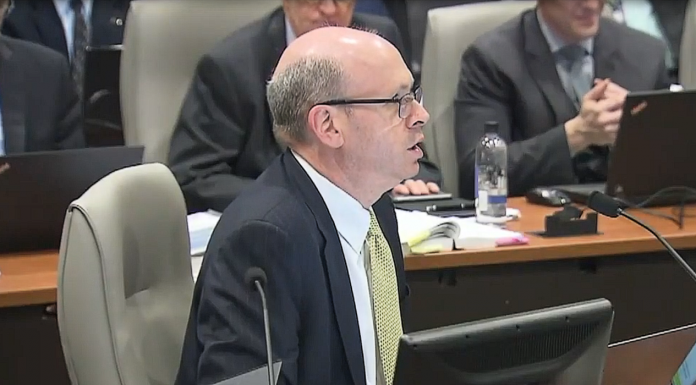(Headline USA) Democrats filed a lawsuit Friday asking a federal court to throw out Wisconsin’s current congressional and legislative district boundaries, arguing the 10-year-old maps are unconstitutional and shouldn’t be used as the starting point for new districts set to be drawn in the coming months.
The lawsuit came less than 24 hours after the U.S. Census Bureau released the data to used in the redistricting process.
Notorious Democrat lawyer Marc Elias filed the lawsuit in U.S. District Court in Madison on behalf of six Wisconsin voters.
The lawsuit asks the court to prevent the Wisconsin Elections Commission from using the current maps for any future elections and to draw new maps if Gov. Tony Evers and legislators don’t reach a deal.
“There is no reasonable prospect that Wisconsin’s political branches will reach consensus to enact lawful legislative and congressional district plans in time to be used in the upcoming 2022 election,” the lawsuit said.
Evers and Republican legislative leaders did not immediately return messages seeking comment.
The current maps were drawn by Republicans and enacted by then-Gov. Scott Walker in 2011, although they already came under attack prior to the 2018 election.
The lobbying of left-wing activists in support of court-enforced “sue-till-blue” gerrymandering may have played a substantial role in ousting Walker, who has gone on to become spokesperson for the pro-state-sovereignty National Republican Redistricting Trust.
Elias, the attorney whose group Democracy Docket brought the lawsuit, did not immediately return a message.
Democracy Docket, along with National Democratic Redistricting Committee led by former U.S. Attorney General Eric Holder, filed similar lawsuits in April in both state and federal courts in Louisiana, Minnesota and Pennsylvania.
While there is time for Evers and the Legislature to act, the lawsuit argues that the federal court should intervene now to set a schedule and be prepared to enacted its own maps “in the near-certain event that the political branches fail timely to do so.”
The lawsuit is the first to be filed in Wisconsin since the numbers were released. However, it’s not expected to be the last.
The activist groups have a seemingly infinite well of funding and structural support—including money from Swiss billionaire Hansjörg Wyss and the remnants of former President Barack Obama’s campaign arm, Organizing for Action.
Having failed in securing a Supreme Court victory and losing all of their political battles to flip state legislatures during the 2020 election, the activists’ new strategy is to block the drawing of new maps based on the current ones that they were unable to get tossed after the previous round of redistricting.
“At the end of the day, we all expect the courts to be drawing maps,” said Democrat U.S. Rep. Mark Pocan, a former state Assembly member, before the lawsuit was filed.
Wisconsin’s population increased by less than 4% over the past decade, and its number of congressional districts did not change, so Republicans are arguing that means relatively minor changes to the current maps are needed.
Armchair map drawers were already putting out possible new lines within hours of the census data’s release on Thursday.
The growth in and around Madison will force those deeply Democratic districts to get smaller, said Joe Handrick, a former Republican lawmaker who worked with Republicans on redistricting in 2011.
Population losses in Milwaukee, another Democratic stronghold, will require those districts to grow and push out from the city, he said.
There are 12 districts in between Madison and Milwaukee, the “turbulence zone,” that will see the most dramatic changes, Handrick said.
Changes in the rest of the state will be relatively minor by comparison, he said. In those 12 districts, 10 are held by Republicans and just two are Democrats.
Just as those population shifts will affect legislative redistricting, they will also power changes to the congressional districts.
The 2nd Congressional District, home to Madison, gained more than any other, with about 78,000 additional people.
The 4th Congressional District, covering Milwaukee, lost about 15,000 people, the only one to decline in Wisconsin.
Both are represented by Democrats—Pocan in the Madison area and Gwen Moore in Milwaukee.
Moore’s district will need to gain about 41,000 people due to population losses.
The 8th Congressional District, covering Brown and Outagamie counties, saw the second-highest growth, adding more than 41,000 people. That district is held by Republican Mike Gallagher.
The growth in Pocan’s district likely means he will lose some people to neighboring congressional districts, one held by retiring Democratic Rep. Ron Kind and the other by Republican Rep. Bryan Steil.
President Joe Biden won Pocan’s district by 40 points last year.
Pocan claimed Republicans will try to counter the addition of Democratic areas to both of those districts by shifting the lines elsewhere to include more GOP-friendly territory, but the options are limited.
Former President Donald Trump carried both the 1st and 3rd congressional districts by single digits.
Changes in the other congressional districts where the population largely held steady will be more minor, Pocan said.
Adapted from reporting by the Associated Press

